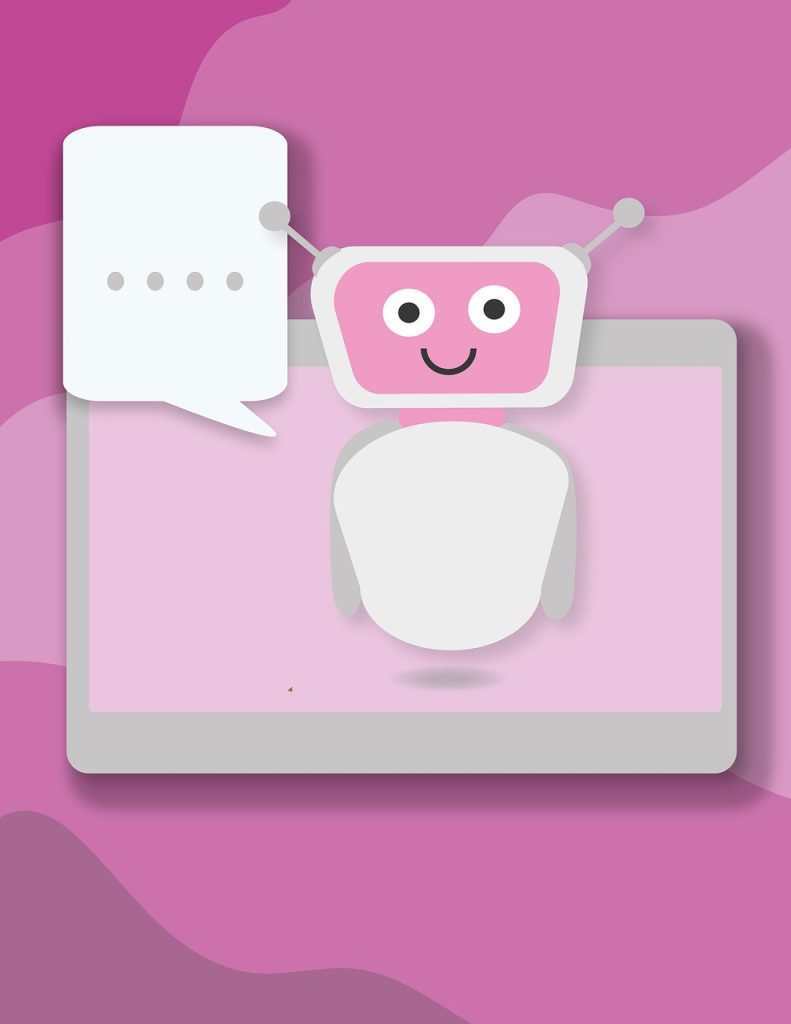
7 AI Chatbot Trends 2025 | Changing Website Experiences This Year
Introduction
AI chatbots have evolved from simple scripts to sophisticated virtual assistants, fundamentally reshaping how websites interact with users. In 2025, staying current on AI chatbot trends 2025 is critical for businesses that want to deliver a seamless chatbot website experience. Today’s chatbots leverage advanced AI and NLP to engage users 24/7, offering immediate answers and personalized guidance. As customer expectations rise for instant support, tracking new developments in AI chatbots ensures that companies don’t fall behind in customer experience.
What’s Fueling the AI Chatbot Evolution?
Several forces are driving chatbot innovation. Improvements in machine learning (ML) and natural language processing (NLP) are enabling chatbots to understand context and intent like never before. Large language models (LLMs) such as GPT‑20 and BLOOM power smarter, more conversational bots. At the same time, growing consumer demand for 24/7 support means websites need always-on assistants. As one analysis notes, chatbots let businesses be “open” around the clock, providing immediate help to global customers. Integration with marketing and sales automation is another big factor—chatbots now plug into CRMs, email systems, and e-commerce platforms to streamline lead qualification and the sales funnel. In short, advancements in AI and a hunger for instant customer service (or AI-powered customer service) are converging to accelerate chatbot evolution across industries.
Trend #1: Hyper-Personalized User Interactions
Today’s chatbots use rich behavioral data to tailor conversations to each visitor. By analyzing browsing history, past purchases, and user preferences, chatbots can make contextually relevant suggestions on the fly. For example, an e-commerce bot might recommend products based on what a customer clicked on or bought before. This level of personalization—akin to having a personal shopping assistant—boosts AI customer engagement by making each interaction feel unique. In practice, this might look like a bot greeting a returning user by name and offering to refill their usual order, or a travel bot proposing destinations based on past trips. Studies show personalized chatbots dramatically improve user engagement and sales; for instance, tailored recommendations have been shown to increase conversion rates and average order value. Overall, personalized chatbots are turning routine Q&A into dynamic, one-to-one conversations driven by customer data.
Trend #2: Voice-Enabled Chatbots and Conversational AI
Voice is rapidly becoming a key channel for chatbots. Smart assistants and mobile devices have accustomed users to speaking instead of typing, so conversational AI that supports voice is on the rise. In fact, by 2024 over 8.4 million businesses were deploying voice chatbots on their sites or apps, with rapid growth expected. These voice-enabled websites let users say, for example, “Find me wireless earbuds,” and the chatbot will respond verbally or with on-screen results. Beyond convenience, voice chatbots improve accessibility: users with visual impairments or literacy barriers can interact via speech, and modern bots even recognize diverse accents and dialects. For businesses, this means reaching a wider audience, as bots can converse in the user’s preferred language or accent. Adding voice to chatbots offers users a hands-free, natural way to interact with websites, increasing convenience and inclusivity.
Trend #3: Integration with E-commerce and Sales Funnels
Chatbots are now integral to online shopping experiences. On e-commerce sites, they do everything from answering product questions to recovering abandoned carts. For instance, virtual assistants on shopping sites can check stock levels, handle returns, and even push personalized upsell offers. Many online retailers have found chatbots increase revenue: one example showed a chatbot could upsell and cross-sell based on browsing history, directly boosting order values. Cart recovery is another crucial use case—bots automatically remind shoppers of items left behind and can offer discounts to entice purchases. In short, chatbots act as AI sales assistants guiding customers through the funnel. They qualify leads, recommend products, and follow up on carts, effectively automating parts of marketing and sales. Businesses report that AI-driven chatbots help “optimize sales” and improve customer engagement by reaching shoppers with timely recommendations. By seamlessly blending with payment gateways and order systems, chatbots create a frictionless shopping journey that drives higher conversions and happier customers.
Trend #4: Emotionally Intelligent Chatbots
Next-generation bots are learning to read emotions. Using sentiment analysis and natural language understanding, emotion AI lets chatbots sense if a user is happy, frustrated, or confused based on their messages. This means a chatbot can respond with empathy—for example, detecting annoyance and switching to a more conciliatory tone or offering to connect the customer with a human agent. This empathetic approach has a powerful impact: companies that add sentiment-aware responses to their chatbots see big gains in satisfaction. One study found a 25% increase in customer satisfaction when sentiment analysis was integrated, along with a drop in customer churn. In practice, an emotionally intelligent chatbot might apologize and offer a coupon if a user expresses disappointment about a late delivery or celebrate if someone provides positive feedback. These nuanced interactions make customers feel heard. By adding this human-like understanding to bots, brands can build stronger loyalty and provide service that feels personally attentive.
Trend #5: Multilingual and Global Chat Support
As businesses go global, chatbots are breaking language barriers. AI-powered bots now commonly incorporate real-time translation, allowing one chatbot to converse in dozens of languages. Modern chatbot platforms use advanced language models (GPT-4 Turbo, mBERT, etc.) to translate customer queries instantly and reply in the user’s native language. For example, a travel site can have a single chatbot that greets users in English, Spanish, Mandarin, or Arabic without pre-scripted phrases. Voice chatbots also support multilingual voice-to-text and text-to-speech, so spoken questions in different languages can be handled on the fly. This opens up new markets without needing separate local-language bots. Crucially, multilingual chatbots greatly improve customer experience; users get support in their own language, which increases trust and satisfaction. The result is global customer support AI that works 24/7 across borders—making it easier to serve international audiences with automated chat.
Trend #6: Human-Agent Handoff and Hybrid Support Models
Even as chatbots get smarter, there are always some queries that require a human touch. The latest hybrid support models focus on seamless AI-human handoff. The idea is simple: let the chatbot handle routine questions and trigger a human takeover on complex or sensitive issues. This “smooth transition” is critical—studies show 63% of customers will abandon a service after just one bad chatbot experience. By contrast, a hybrid model can automatically route tricky chats to a live agent before the customer gets frustrated. For example, if a bot detects the user is upset or fails to understand after several attempts, it flags the conversation for a human to join. Customers benefit by getting quick AI answers for simple tasks and knowing an expert is ready if needed. Companies report that combining bots with humans leads to “faster resolutions” for technical issues and prevents drop-off. This balance of bot efficiency and human empathy is becoming a best practice, ensuring users always feel valued in their support interactions.
Trend #7: Privacy-First and Secure AI Chatbots
With chatbots handling more personal data, security and privacy are top priorities. Companies are adopting privacy-first chatbot designs to comply with regulations like GDPR and CCPA. This means minimizing data collection, using strong encryption, and being transparent about how chat data is used. Building trust is crucial: users need to know their inputs are safe. In fact, failing to secure chatbot data can be very costly—GDPR fines can reach €20 million or 4% of global turnover. To avoid such penalties and earn customer confidence, businesses are implementing features like secure authentication and anonymization. Some chatbots even use on-device AI or private data vaults so conversations never expose sensitive info. The upshot is that secure customer chatbots help build trust with privacy-minded users. When customers see a chatbot marked as GDPR-compliant and encrypted end-to-end, they’re more likely to engage deeply. In 2025, savvy companies will emphasize transparent data practices (clear opt-in notices, easy data deletion) as a core part of their chatbot UX.
How These Trends Are Transforming User Experience
Together, these trends are making the chatbot user experience (UX) faster, more relevant, and more satisfying. Users now expect instant responses: chatbots can answer common queries in real time (speed), drawing from context and user history (relevance) to keep conversations on point. Personalization and emotional intelligence mean interactions feel less robotic and more human, increasing user satisfaction. Multilingual and voice options make chatbots convenient for every user, further improving the UX. In practical terms, this leads to higher customer retention: happy users stay on site longer, convert more, and feel positive about the brand. For businesses, the lesson is clear—adopting the latest chatbot UX innovations is no longer optional. Companies that upgrade to these smarter, more secure, and more integrated bots will set a new standard of user experience, while laggards risk falling behind user expectations.
Final Thoughts and What to Expect Next
Looking ahead, the next wave of chatbot innovation will likely blend even more AI advances: think bots that synthesize voice/video and text in one conversation, or that can draw from live data feeds (like new inventory or social trends) on the fly. Generative AI could let chatbots draft quick emails or content as part of support, further blurring the lines between chat and full-service agents. For now, businesses should audit and upgrade their chat systems: ensure your bot can do multilingual conversation, escalate smoothly, and safeguard user data. Embracing these trends will keep you competitive in 2025 and beyond.
If you found these insights useful, please share this article and comment below on how your organization is using AI chatbots. Insert this link → https://lu.ma/ir3phf51 and let’s continue the conversation!
Stay connected with us on HERE AND NOW AI & on:

